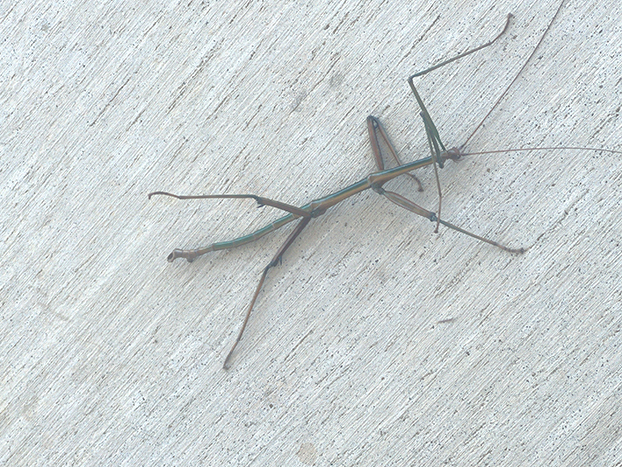Species Spotlight: North America’s largest insect
Published 8:07 am Tuesday, June 25, 2024

- The Giant Walking stick is the largest insect in North America. This one walked across the concrete in front of a door at Mt. Zion Baptist Church Sunday. (Hunter Cloud | The Daily Leader)
- ZION — He creeped slowly across the side entrance to the Mt. Zion Baptist Church greeting church attendees as they walked by. At first glance, it appeared some twig had broken off of a tree and was scooting across the concrete by a breeze.
North America’s largest insect, the Giant Walkingstick, Megaphasma denticrus, is well camouflaged. According to the Missouri Department of Conservation, the insect is the largest insect in North America when measured by length. Female Giant Walkingsticks can reach lengths of seven inches.
The walkingstick is distinguishable from other species of walkingsticks due to its huge size and the middle and hind legs have spines. Males have a single large pine on their hind legs.
Giant walkingsticks can be green, tan, brown or rusty brown. The bugs are harmless and eat leaves like many other stick insects.
Again, it is well camouflage to blend in with trees and shrubs. The insect can move with the wind or breeze to mimic the motions of a branch in a breeze. Mississippi State University Professor Blake Layton said walkingsticks lay their eggs in leaf litter where the immature walkingsticks feed on leaves. Most of the time, the insects do not cause issues with trees although they can eat the leaves.
Adult walkingsticks are usually nocturnal and are rarely seen unless they venture onto sidewalks or buildings. The insect prefers to eat leaves of deciduous trees such as oaks and hickories.
The insect is common and not threatened although they are hard to see. Only about 30 species of walkingsticks live in North America of the thousand species found worldwide.
One of those species can be a nuisance and needs to be treated with care. Layton said the twostriped walkingstick grows up to just two inches long and if handled can squirt a person in the eye.
“It can blind you for about a day. I’ve heard it is rather painful,” Layton said.
Walkingsticks are unable to fly and usually distribute by foot, hitching rides or blowing off of trees in storms. Layton said he has seen several come off of a tree when cutting timber.
Layton is a Magee native. He said he has worked at Mississippi State University for 36 years. Friday will be his last day as he retires. Layton said he filed his final Bug’s Eye View newsletter Monday.





